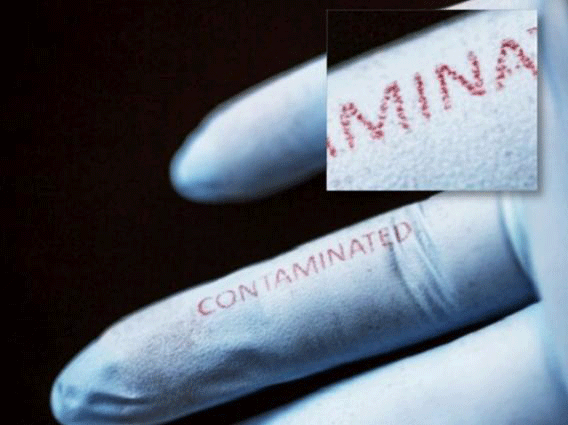
Fibroin, the silk protein, has a lot of amazing properties that can make it into a common material used in advanced new medical applications. It’s both physically strong and chemically protective of biological compounds that may be wrapped in it, theoretically allowing it to be used as a perfect transport vehicle for antibodies, enzymes, and other molecules and compounds that need safe passage within the body.
Scientists at Tufts University and University of Illinois at Urbana-Champaign are now reporting in journal Advanced Materials on a way of using inkjet printers to put down layers of functional silk ink. The ink can contain antibiotics, nanoparticles, proteins, and other small objects ,while letting them perform their normal duties. The team tested this capability in a variety of seemingly practical applications, as reported by a Tufts press release:
Bacterial-sensing polydiacetylenes (PDAs) printed on surgical gloves; the word “contaminated” printed on the glove changed from blue to red after exposure to E. coli
Proteins that stimulate bone growth (BMP-2) printed on a plastic dish to test topographical control of directed tissue growth
Sodium ampicillin printed on a bacterial culture to test the effectiveness of a topographical distribution of the antibiotic
Gold nanoparticles printed on paper, for possible application in photonics and biology (e.g., color engineering, surface plasmon resonance based sensing and bio-imaging)
Enzymes printed on paper to test the ability of the ink to entrain small functional biomolecules
Study in Advanced Materials: Inkjet Printing of Regenerated Silk Fibroin: From Printable Forms to Printable Functions…
Source: Tufts University…
The post Inkjet Printed Silk Makes Hospital Gloves that Detect Bacteria appeared first on Medgadget.
